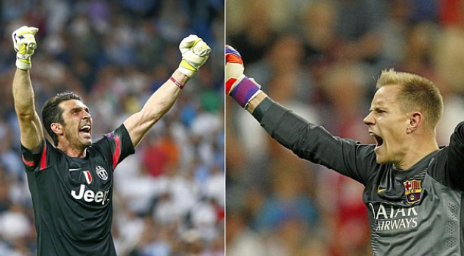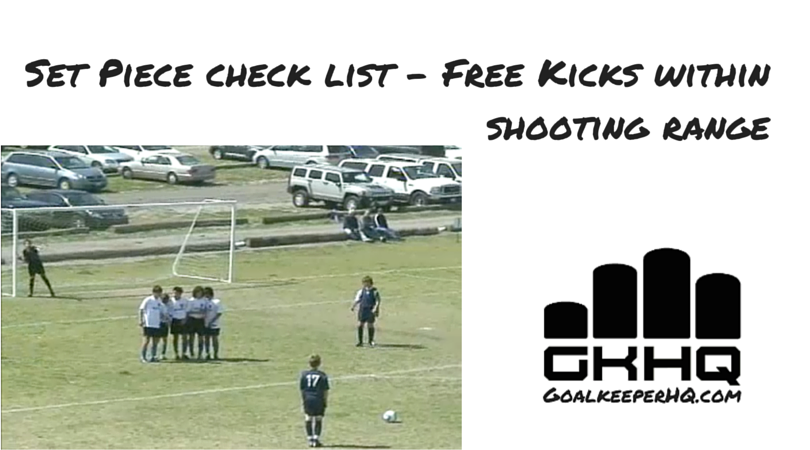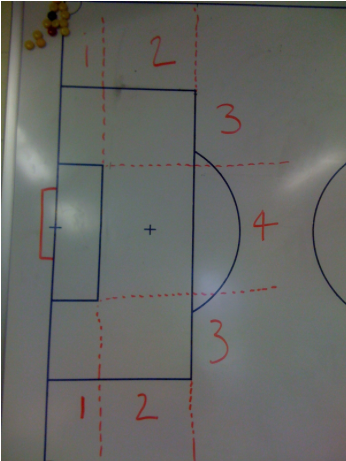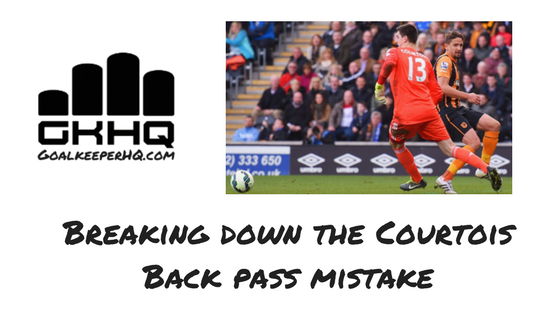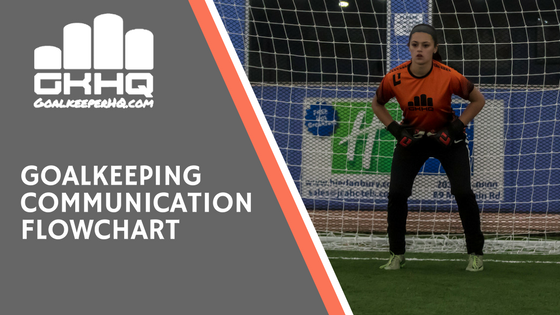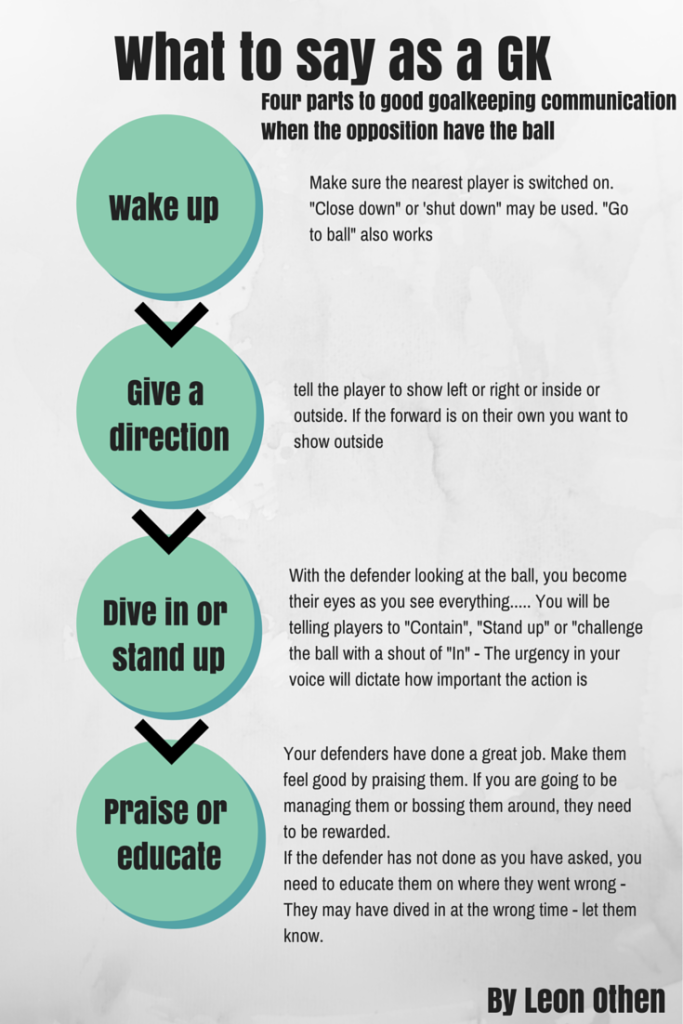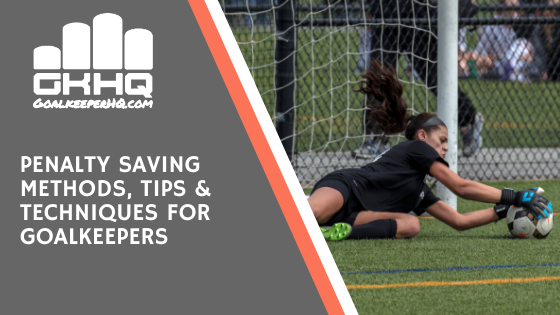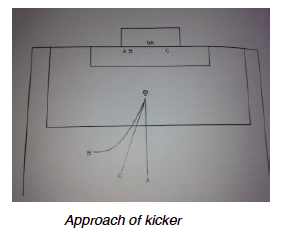See below for the save of the game from the Champions League Final.
Goalkeeper HQ
Your headquarters for all things goalkeeping
Category: Game Day (page 3 of 5)
The Champions League final will see two great sides in Juventus & Barcelona compete in Europe’s most prestigious club competition.
The two goalkeepers are not only on different teams but on opposite sides of their career, with Gianluigi Buffon being the veteran at 37 and Marc Andre Ter Stegen being labelled as one of the best young goalkeepers of 2015 at only 23.
It will be interesting to see the experience of Buffon being able to spot danger before it happens and maybe intercepting whilst the younger Ter Stegan will be more athletic.
It will be interesting to see how Ter Stegan does as he has not played regularly for Barcelona and is their designated Cup goalkeeper, a stance that many clubs are now taking to ensure goalkeepers on their roster are kept happy with playing time.
Buffon has not won the Champions League in his long illustrious career – he will have to have the game of his life in order for him to do so as Barcelona are heavily fancied.
See this youtube video of the two goalkeepers.
Set pieces contribute a large number of goals towards an organized attacking team. They get their success preying on unorganized teams and unconfident goalkeepers.
When any set piece is given against our team, you, as goalkeeper should take charge through communication to organize the defense in front of you.
For Free Kicks within shooting range:
1) Be ready for and make team aware of any quick restarts from the opposition.
2) Yell out the number that is in the wall. ( See image below ) Do not have defenders in the wall.
3) Line the wall up with the near post. ( Have one player that directs the wall but have them face forward so they can follow your directions ) “Left two steps – HOLD” is specific instructions.
You should line up the second player with the near post to ensure no curling shots around the near post. Have the tallest player on the inside. Ensure you can see the ball.
4) Make sure all the players on the other team are marked and matched up. Hold the line no deeper than the wall. By bringing players back to your goal line, it just incourages forwards to get in your way
5) Cover the side of the goal that the wall is not. Make sure you can se the ball being struck. Remember that the purpose of the wall is to make play predictable.
Free Kicks in this area does not allow time for a break. See the unfortunate goalkeeper that took a break instead of doing the above steps. ( Sorry – This video is no longer available )
The article is written by award-winning journalist Bill Speros. Bill has written and reported for ESPN, CBSSports.com and was a sports/deputy sports editor at several metro daily newspapers. Reach Bill on the OBF Facebook page, on Twitter @realOBF
The article, named “There’s a Reason Why Your Kids Aren’t Playing – They’re Not Good Enough” provides an honest account to parents about some of the delusions they have for their children, the problems with children today and the positive bubble that parents provide, but also for the importance of the coach to provide an honest feedback with an action plan for improvement.
See my article on what would get you top marks on a technical evaluation.
See my article on what would get you top marks on a tactical evaluation.
See my article on what would get you top marks on a physical evaluation.
See my article on what would get you top marks on a psychological evaluation.
For those that didn’t see…….
Here is a break down of Courtois’ performance. As you will see he generally had a very good performance.
I will be discussing the mistake made on 3 minutes & 45 seconds… the mistake that unfortunately for goalkeepers is the thing that people remember, rather than the saves.
So…. should the defender have played the ball back? Should Courtois have cleared it first time?
Here is my response to the above questions I had on the goal, and I highlight the situation when the ball is behind the defense and communication is needed by the goalkeeper…
What to say when the ball is either in the air of behind defense.
1 – Keeper’s coming! : You are coming to collect ( either inside or outside the area ). Note that a call of just “Keepers” may lead to confusion.
2 – Knock it back / Head it back : It’s keepers ball, but needs a player to help it on to you. As per the back pass information, you should provide an audio and a visual of where you want the ball played. Goalkeepers should not be requesting the ball back if the ball is in the area. ( Too risky plus you should have already come to collect )
3a – Away : You can’t deal with it, but hopefully someone else can. If the opposition are closing down on your defender and a bouncing ball means that a pass back would cause more trouble then this should be the call. If the ball is running into the penalty box and you have not collected, the call should also be away.
3b – Turn outside : No need to knock it back, turn so you can set up an attack.
Goalkeepers are constantly being told to “Communicate” or “Talk” to the players but what do you say?
I have come to the conclusion that a goalkeeper does not talk for one of three reasons.
- Lack of confidence in their ability
- Wanting peer acceptance and not wanting to upset players by yelling at them
- Not knowing what to say and when to say it.
For the sake of this article, I will be concentrating on a small part of the third reason goalkeepers do not talk – Not knowing what to say and when to say it.
There are plenty of times in which a goalkeeper needs to communicate. They are;
- When the ball is behind the defense
- When the defender is 1v1 with the attacker
- Free kicks
- Corners and long throws
- Balls out wide
- When distributing
- When the team needs leadership
See below for the four stages of communication when the defender is 1v1 with the striker.
I created this flowchart to help goalkeepers to have a systematic approach to their communication.
See also another post on communication and goalkeeping volcabluary
The power of good communication
Penalty saves are the goalkeeping equivilent to outfield players scoring goals. Unless, of course, you are a [Goalscoring Goalie]
As goalkeepers, we have to be excited at the prospect of saving a penalty and being a hero. There are no expectations or demands on us. We were so pleased this year when Sydney Schneider of the Jamaican national team saved the 2019 World Cup’s first penalty wearing L1 Goalkeeper Gloves. See below.
Goalkeepers should be aware there are two scenarios and methods of saving for penalties.
1 – One off penalty. Given in a game.
2 – Penalty Shoot-Outs.
One off penalty
Pre-penalty – Ensure the ball is kicked away by yourself or a teammate after the kick has been given. Plead ignorance if given a talking to by the referee, saying that you didn’t hear the whistle. By having the ball a long way away from the penalty taker, it delays the game thus providing extra time for the penalty taker to think about their kick and for you to get into their head.
Assess the type of player taking the kick – Generally speaking, defenders take fewer risks than forwards and tend to play safe by pushing the ball to the same side as their kicking foot. Tricky, skillful players may try to fool the goalkeeper with a clip down the middle. Left-footed players tend to put the ball in the opposite corner.
Watching the eyes of the kicker – If you can get the ball and hand it to the kicker. Watch them place the ball down. In many instances, the kicker looks to the side where they are going to kick. By being so far off your line, you are also getting a phycological advantage by covering so much of the goal until you are told to go back to your line.
Observe the approach of the kicker – The run-up of the kicker can give some idea of the body position of the kicker and therefore an indication of where the ball is intended to go. See picture ( below )
The above tips give the goalkeeper the best chance to anticipate where the ball is going to go and guess the save.
Penalty shoot-outs
As goalkeepers, we must remember that at penalty shoot-outs, there will be players taking penalties that are not normal penalty takers. They will be nervous, play safe and easier to read.
You can pretty much bet that two of the five penalties will be within the diving envelope. The diving envelope is the area within the reach of the goalkeeper and shown below.
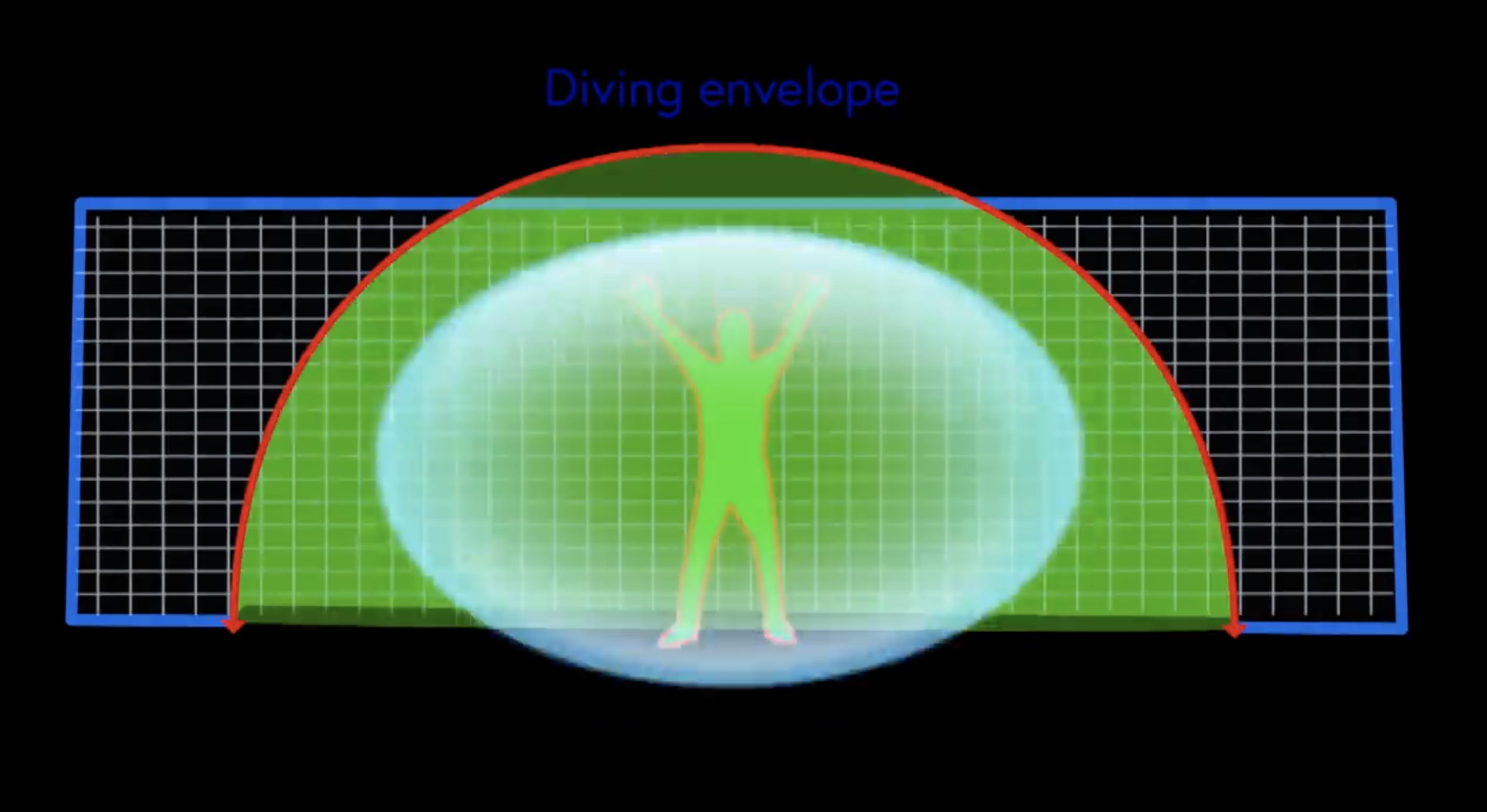
The goalkeeper in this scenario should concentrate on making saves in this area.
With this technique, the goalkeeper can pretty much react to the shot, rather than anticipate. Two saves out of five will make you a hero!
Other techniques to give you an advantage
* Dummy the kicker – Make an exaggerated move to your weaker side as the kicker runs up, hoping that they put to your strong side or make them change their mind last minute.
* Stand, off center of the goal – This messes with their head. If the kicker always kicks to the side that you have made smaller, they may think about changing…… but what if you have left the other side open because that is where you are going to dive? Get in their head!
This was recently done by one of our students this year, and was done by my high school goalkeeper who helped win two penalty kick competitions.
* Loud, large movements across the goal – Ensure you are set before saving though.
* The delay. Point out that the ball isn’t on the penalty spot, have a coach tape your finger, do your laces up. Time will only make the opposition nervous. Hope Solo famously admitted to using this tactic in the 2015 Women’s World Semi-Final which helped them beat favorites Germany 2-0. ( ABC news report below)
Lastly, don’t celebrate too early!! There have been cases of the ball hitting a crossbar or even a goalkeeper’s save, and with the goalkeeper still celebrating at a victorious penalty shoot-out, the ball has spun into the goal.
Mind games play a big part in getting into the opponents head. This takes confidence. You saw above, how Hope Solo used the stalling or delay method as part of the mind games.
In one of the most famous displays of goalkeeper mind games, Tim Krul of the Netherlands came on as a last minute substitute in the 2014 World Cup against Costa Rica. The video below shows his audacious attitude that got the Netherlands into the next round.
You see how Krul was communicating with the opposition.
I was recently notified of this great penalty save by Claire MacKenzie. Claire is one of the original GKHQ students and a fan of our L1 gloves.
Legend has it she gave these orders to her defenders before the PK was taken
“Get ready to clear this ball after I save it”.
Confidence, determination and being prepared puts doubt in the penalty makers mind.
Lastly, be aware of the new rules put in place in June 2019 in which the goalkeeper will get a yellow card for stepping off the line prior to the kick. See the article of [Goalkeepers being aware that they could get sent off whilst saving a penalty]
Sydney Schneider, after saving the second penalty in a row, ended up getting a yellow card at the 2019 World Cup after VAR showed that she stepped off her line.
https://youtu.be/PJM1ifVai14
Good luck to all the penalty savers.
Allan McGregor of Hull City made the mistake of not clearing his original good save which led to the floodgates opening for West Ham. The mistake lead to another 2 goals going in.
See the video here.
See my notes on goalkeepers deciding to catch, tip or parry.
Also on recovery saves
Sometimes, the hardest situation to be in as a goalkeeper is when your team is dominating. It seems a bit counterintuitive,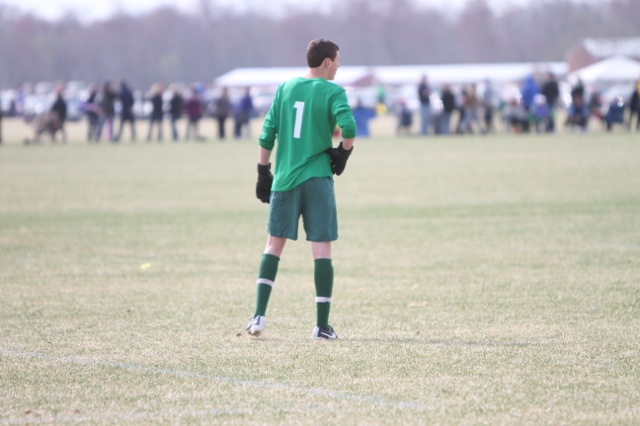 but having to make a diving reaction save or snuff out a breakaway after being mostly idle for 15 or 20 minutes is extremely hard mentally.
but having to make a diving reaction save or snuff out a breakaway after being mostly idle for 15 or 20 minutes is extremely hard mentally.
The aim of any goalkeeper when the the team is doing well is to ensure that clean sheet. A 7-1 scoreline stinks of a defensive error to those who did not see the game.
Boredom will inevitably set in and this may impair judgement and decision making in a bid to get on the ball. The best goalkeepers are the ones, who, having not had anything to do, can pull off a great save to preserve the shut out. It can be critical if the game is close in spite of the lopsided run of play, as it often is in soccer. A quick counterattack goal by the opposition can let the other team back into the game or even give them the lead!
The way to combat losing focus when the ball is at the other end of the field for long stretches is to stay connected with your defense:
- Stay at the top of the penalty area or even outside it and play sweeper/keeper. Be ready to cut out long balls over the top, and make yourself available to your teammates for backpasses. Make yourself part of the play.
- Stay in communication. Don’t stop talking to your defense just because there isn’t and immediate threat. Make sure the defenders don’t fall asleep as well and let an opposing forward go unmarked. At the very least, acknowledge them when they make a good defensive play in front of you.
- Constantly scan the field and ask “what if?”. Mentally prepare for counterattacks that look like they’re developing — try to read the play and determine where it might go in a worst-case scenario, and remind yourself what you would need to do in that situation. The play might never come through, but if you are prepared for the worst, you can’t be caught off guard.
I found this great video of Manuel Neuer.
I’ll let the great man show you how it is done.
[youtube=http://youtu.be/EyoXo0Dmnn4]
© 2025 Goalkeeper HQ
Theme by Anders Noren — Up ↑
